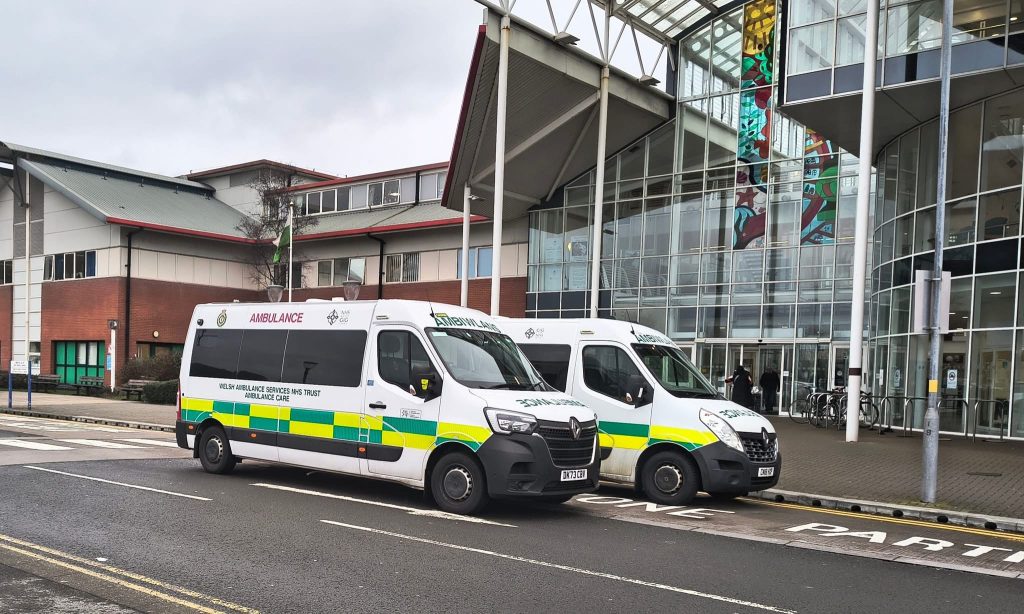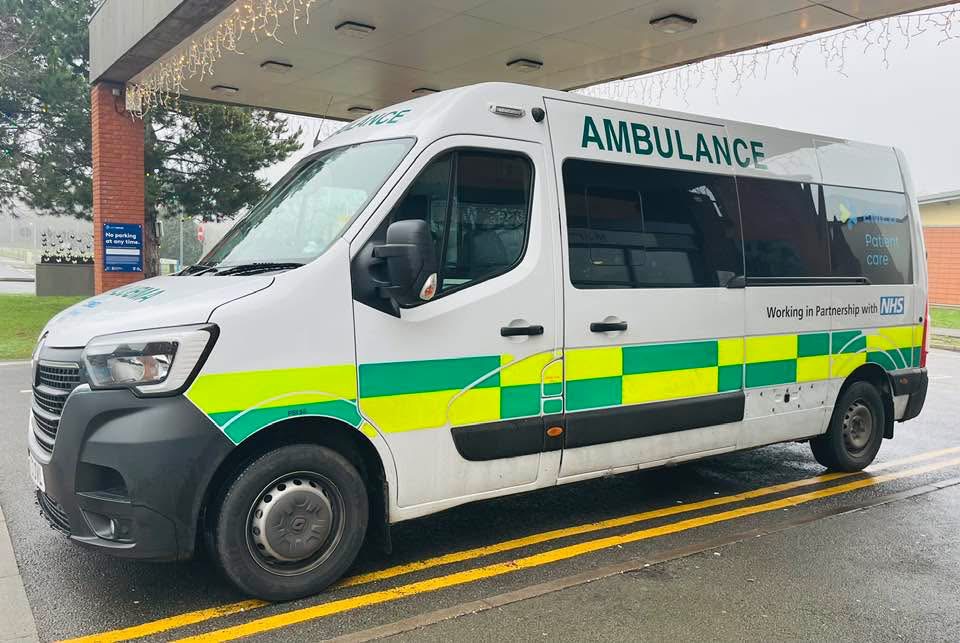Level 3 Award in Patient Care Services: Ambulance Driving
This is the nationally recognised qualification for Non-Emergency Response Ambulance Drivers across the UK, Northern Ireland and the Republic of Ireland.
Recognised by HSC and NHS Ambulance Trusts, private and voluntary ambulance service providers and the Driver Training Advisory Group (DTAG)

About the course
There are two different qualifications by two different awarding organisations FutureQuals and Qualsafe Awards
Click here to view the details of the Qualsafe Awards Level 3 Award in Patient Care Services : Ambulance Driving (RQF)
This FutureQuals Level 3 Award in Patient Care Services: Ambulance Driving is the most widely recognised and accepted ambulance driving qualification for Pre-Hospital professionals in routine ambulance care roles, such as Ambulance Care Assistants (ACA), Patient Care Services (PCS), Non-Emergency Ambulance Transport services in the NHS and private sectors.
Course Entry Requirements:
Learners are required to evidence the following before they can be accepted on to the course:
Be 18 years of age (or older) (21 if using our vehicle)
Hold a valid driving licence for the category of vehicle being driven the full duration of the qualification
not have any outstanding court cases, prosecutions or pending disciplinary action in any area being brought against them.
Learners are not required to have any formal qualifications in literacy or numeracy; however as a Level 3 Award qualification – learners will be expected to demonstrate an adequate level of written English (comparable to an a-level academic standard)
Learners are also expected to have access to a laptop and possess basic IT skills as we use Microsoft Office 365 to facilitate elements of the course, course material and host your portfolio which you are required to complete.
Course Content
Successful completion of the course helps ambulance drivers and potential ambulance drivers to confidently drive a range of patient care ambulance vehicles under non-emergency conditions; as well as gaining insight into responsibilities for patient safety and comfort, and an awareness of vehicle empathy in mind.
Whilst guided learning hours with your facilitator are very “practical”, learners have a significant amount of knowledge to acquire. Even when ‘on-the-road’ facilitators will still be teaching theoretical and knowledge based aspects of the course a summary of topics are below:
- Ambulance driver responsibilities
- Consequences of disregarding legislation and driving regulation
- Exemptions available for routine ambulance driving
- Incident management
- Banksman requirements
- Complying with The Highway Code
- Ambulance vehicle daily inspections
- Legal requirements of a pre-driving ambulance VDI
- Pre-driving checks
- Reasons for performing a pre-driving check (PDC)
- Carrying out ambulance vehicle checks
- Reporting vehicle defects
- Different types of roads
- Different types of motorways
- Procedure for breakdowns
- Different types of road furniture
- Traffic signs, signals & markings found in The Highway Code
- Anticipating other vehicles speed
- Anticipating other drivers actions and behaviours
- Joining, driving & exiting multi-lane carriageways
- Hand position & Steering techniques
- Vehicle position steering techniques
- Tapered braking
- Braking considerations
- Economical driving
- Smooth use of controls
- Economical driving
- Using acceleration sense
- Phases of the system of car control
- Types of hazards
- Taking, using and giving information
- Negotiating hazards
- Negotiating corners & bends
- Types and causes of skids
- Avoiding skids
- Electronic Stability Programme and ABS braking
- Human factors that contribute to road traffic collisions
- Managing fatigue
- Managing confrontational behaviour
- Managing effects of stress
- Managing distractions from within the vehicle
- Preparation requirements for driving an ambulance vehicle during the hours of darkness
- Preparing an ambulance vehicle for driving during the hours of darkness
- Driving in a range of weather conditions
- Dealing and managing dazzle from other road users’ lights
- Acting as a banksman
- Banksman requirements when reversing and manoeuvring
- Banksman signals
- Following the directions of a banksman
- Reversing and manoeuvring
- Giving directional information
- Using and applying directions
- Using navigational aids


From:
£995 + VAT
0% interest free payments
Course Summary:
Regulated RQF Qualification
Classroom / Blended & On The Road
35 Guided Learning Hours
40 hours Total Qualification Time
Non Expiring Certificate
Course Delivery Options
Full Time:
1 Week
Monday – Friday
Mixture of classroom and practical driving.
Part Time:
2 weekends
Friday Evening – Online Live Theory (MSTeams)
Saturday & Sunday Practical Driving.
Bespoke:
If your availability doesn’t fit into the options above, we can schedule courses to suit a group.
Chat to us about your requirements and we can devise a schedule to suit your group and their availability.
How the course is assessed
Learners are assessed by formative and summative, assessments conducted by your facilitator, an independent assessor and online electronic exams taken under exam conditions.
Formative Assessments:
Formative assessments are an ongoing, overall observation of your skills, abilities, attitudes and working practices; this is done by your facilitator throughout the course to ensure that you have the right attributes appropriate to the role.
Even if you pass all assessments, you still need to demonstrate to your facilitator that you are responsible and capable of the role, otherwise you could still be referred
Summative Assessments:
Summative assessments are final assessments of skills where you have opportunity to demonstrate to your facilitator that you have learned the required knowledge, either by demonstrating activities such as:
- Vehicle Daily Inspection
- Pre Driving Checks
- Reversing and Maneuvering
- Route Planning
- Night Driving
- Emergency Call re-prioritisation
Invigilated Exams:
There are three multiple choice question examinations conducted under exam conditions throughout the course including
- Traffic Signs, Road and Vehicle Markings (MCQ 1)
- Theory before on road training at speed (MCQ 2)
- Legislation, Highway Code and Roadcraft (MCQ 3)
Final Independent Driving Assessment
Once you have completed the course requirements; a final driving assessment is undertaken by an independent driving examiner.
This lasts for (at a minimum) an hour, and covers both routine and emergency response driving, where your driving standards are observed throughout, across various types of roads, including urban, rural, city centre and motorway / multi-lane roads.
Much like a normal driving test, the examiner will only provide directions and when you have received your emergency call, or stood down from your emergency call.
What your course fees cover
- Access to the scheduled classes as part of the Guided Learning Hours (GLH)
- Registration fee with the Awarding Organisation (FutureQuals)
- One attempt at each Multiple-Choice Question Paper (MCQ) as timetabled
- Two submissions for the review of written work products (including diaries)
- Assessment and sign off of your portfolio (By Group or Cohort) *
- Quality Assurance of your portfolio (By Group or Cohort) *
- Electronic Certificate (E-Certificate
For the duration of your qualification you will have access to our Microsoft Office 365 platform which will provide you with:
- Office 365 Licence:
- Access to online versions of the Microsoft Office Suite
- Access to your Portfolio
- Access to Electronic course materials (Textbooks etc)
Certification
Successful learners will receive a Regulated FutureQuals Level 3 Certificate in Emergency Response Ambulance Driving (RQF) e-Certificate.
Certificates can be validated on the FutureQuals Website here.

